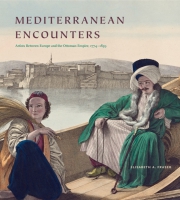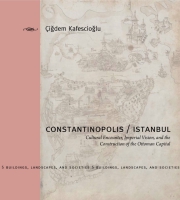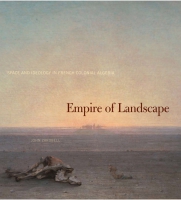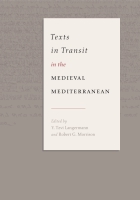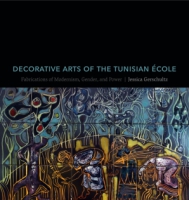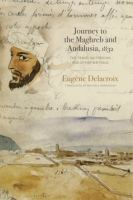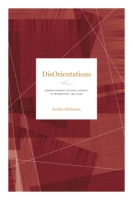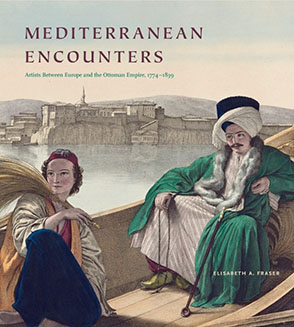
Mediterranean Encounters
Artists Between Europe and the Ottoman Empire, 1774–1839
Elisabeth A. Fraser
Mediterranean Encounters
Artists Between Europe and the Ottoman Empire, 1774–1839
Elisabeth A. Fraser
A 2017 Choice Outstanding Academic Title
“This fine new book invites the admiration of those who value superb scholarship and a presentation worthy of bibliophilic tradition.”
- Media
- Description
- Reviews
- Bio
- Table of Contents
- Sample Chapters
- Subjects
Hear the author discuss her work on the Ottoman History Podcast.
Voyagers to and from the Ottoman Empire documented their journeys in prints, paintings, and lavishly illustrated travelogues; many of these helped define Europe’s self-identified role as heir to Ottoman civilizations and bolstered its presence in the Islamic Mediterranean and beyond. Fraser finds that these works illuminate not only how travelers’ experiences abroad were more nuanced than the expansionist ideology with which they became associated, but also how these narratives depicted the vitality of Ottoman culture and served as extensions of Ottoman diplomacy. Ottomans were aware of and responded to European representations, using them to defend Ottoman culture and sovereignty. In embracing the art of both cultures and setting these works in a broader context, Fraser challenges the dominant historiographical tradition that sees Ottoman artists adopting European modes of art in a one-sided process of “Europeanization.”
Theoretically informed and rigorously researched, this cross-cultural approach to European and Ottoman art sheds much-needed critical light on the widely disseminated travel images of the era—important cultural artifacts in their own right—and provides a fresh and inviting understanding of the relationships among cultures in the Mediterranean during an era of increasing European expansionism.
“This fine new book invites the admiration of those who value superb scholarship and a presentation worthy of bibliophilic tradition.”
“This book obviously speaks to scholars of art history and imperial history and to students of books and printing, yet the complex tapestries unraveled and rewoven in each chapter speak as well to questions of national identity, anti-imperialism, artistic autonomy, and originality and borrowing. Fraser’s careful and systematic analyses of illustrations and texts in multiple contexts across disciplinary debates should not only speak to specialists but also interest and teach others for whom these travel books may be an introduction to the borderlands and crossings of Mediterranean empires to records one can still read—after centuries of distance—as lessons in global exchange. Summing up: Essential.”
“Elisabeth Fraser’s wonderful book tells us the story of the arduous efforts by artists and publishers alike to produce and circulate paintings and prints about the Ottoman Empire in the period 1774–1839. She argues for the importance of Choiseul-Gouffier’s massive Voyage pittoresque in establishing a template for representation that influenced both European and Ottoman artists and offers rare insights into an evolving French-Ottoman cultural milieu in the period of global transition from collaborative to invasive empires.”
“Moving beyond the conventional Orientalist narrative, Mediterranean Encounters convincingly connects European travel images and Ottoman visual culture, as well as art and diplomacy, in the early days of European expansion and Ottoman reassertion. In doing so, this work offers a fresh and welcome account of the successes, contingencies, and contradictions of cross-cultural contact.”
“A major contribution to the field, Mediterranean Encounters brings together art history, Ottoman studies, cultural history, and globalization debates to tell several intertwining stories. At the heart of this book is a far-reaching analysis of the illustrated travel book and the precarious relationship between word and image. Stunningly researched and hugely enjoyable to read, it will be useful for anyone interested in the history of the book trade, travel, and European-Ottoman encounters in the modern period.”
“Through her examination of some fascinating images and travel writings from the late eighteenth and early nineteenth centuries, Elisabeth Fraser makes a compelling argument for the complexity and interdependence of European-Ottoman relations and the exchange, reciprocity, cultural mediation, and even collaboration that characterized them.”
“With its rich archival research and visual analyses, often movingly informed by personal passion for her subjects, Elisabeth Fraser’s Mediterranean Encounters redresses the asymmetry in scholarship on Franco-Ottoman relations by ‘reading travel images through Ottoman history and culture.’”
“Fraser’s astute analysis of Ottoman identity as both ambiguous and hybrid transcends deep-rooted Orientalist arguments about the fixity of cultural belonging, which her text demonstrates is never fixed at all. Indeed, it is this quality [of] transcendence that makes Mediterranean Encounters a truly exciting new book—for the world was global, connected, and contingent long before the advent of more modern technologies and digital networks.”
“A welcome contribution to the growing scholarship on representations of alterity that looks beyond the Saidian binary of an ever-authorial and authoritative West and subservient East (one that she rightfully asserts has injuriously transcended Said’s own ‘own supple thinking’). Her work also poses a powerful critique of Bernard Lewis’s Ottoman-decline paradigm in his 2002 book What Went Wrong? Western Impact and Middle Eastern Response.”
Elisabeth A. Fraser is Professor of Art History at the University of South Florida and the author of Delacroix, Art, and Patrimony in Post-Revolutionary France.
Contents
List of Illustrations
Acknowledgments
Introduction: Interpreting Travel in the Ottoman Mediterranean
Part I: Power in Question
Chapter 1 Reading Choiseul in the Gaps of the Orientalist Archive
Chapter 2 In the Shadow of les Grands: Cassas’s Orientalist Self-Fashioning
Part II: Ottoman Culture Abroad
Chapter 3 The Translator’s Art: Mouradgea d’Ohsson, Ottoman Dragoman in Paris
Chapter 4 Miniatures in Black and White: Melling’s Istanbul
Part III: Contradictory Contact
Chapter 5 Skin of Nation, Body of Empire: Louis Dupré in Ottoman Greece
Chapter 6 A Painter’s Renunciation: Delacroix in North Africa
Postscript
Notes
Bibliography
Index
Introduction:
Interpreting Travel in the Ottoman Mediterranean
Each time we enter a new place, we become one of the ingredients of an existing hybridity which is really what “local places” consist of. By entering that hybrid, we change it; and in each situation we may play a different role.
—Lucy Lippard, The Lure of the Local
This book is about artists and other voyagers traveling to and from the Mediterranean, travel images, and cross-cultural exchange. I conceived this project when I first encountered the small sketchbooks Eugène Delacroix carried with him during his travels in North Africa in 1832. I knew the oil paintings with North African themes that the painter produced for decades after his voyage, and I was well versed in the Orientalist narrative that linked these paintings to modern French colonialism beginning with Napoleon’s invasion of Egypt in 1798. But these magnificent sketchbooks, filled with rich and complicated imagery and annotated with the artist’s observations, gave me pause. Whereas the Delacroix I knew made bold, dynamic images, with an emphasis on surface and gesture, these sketches were tight, constrained, and closely observed. They were tense and hesitant and concerned with capturing the “real” in ways that seemed at odds with Delacroix’s usual sketching practice. I began to think about how the conditions and circumstances of travel might impinge on artistic practice, how travel and representation could be seen as parts of a dynamic and unpredictable process rather than one with preordained results. Looking for precedents, I stumbled upon an abundance of material and a large cast of colorful characters who figure in the history of travel images. Although the massive Napoleonic Description de l’Égypte (1809–28) is perhaps the most famous product of a European voyage to the Mediterranean of this era, the modern story of art and travel in the Mediterranean began several decades before this monument was conceived; looking beyond this monolith yields a far more complex and comprehensive version of this story than has previously been told.
The Mediterranean, much of whose shores defined the edges of the Ottoman Empire during the period of my study, was marked by ancient histories of trade, exchange, and cultural intermixing. It was in the Mediterranean ports of the Ottoman Empire—the so-called Échelles du Levant, as they came collectively to be known—that France and other European nations built their first network of consulates, in the fifteenth and sixteenth centuries, because of the importance of commercial relations and trade in the region. In this sense, the notion of the “Mediterranean” is also a geopolitical creation of European diplomacy.
France had an early and special relationship to the Sublime Porte, forged by François I’s alliance with the Ottomans, their first diplomatic pact with a European nation. The French consular presence in the Ottoman Empire was formalized in “capitulations” obtained by François in 1535. It was under François I too that the College de France, a bastion of Orientalist studies, was founded, followed in the seventeenth century by the establishment of the École des jeunes de langues, where translators were formed in “Oriental” languages, beginning a long tradition of the study of “Oriental” cultures in France. By the eighteenth century the French were the largest European population in the Ottoman Empire, and they had the most important commercial presence there.
Though Europeans had certainly traveled to the Ottoman Empire in earlier centuries, increasing numbers of artists and antiquarians built their reputations on Mediterranean travel in the late eighteenth century, producing prints, paintings, or published travelogues and contributing to large-scale illustrated travel books, in which lavish engravings became common in this period. In addition to disseminating knowledge about Mediterranean societies, travel literature and images played a major role in defining France’s sense of itself as heir to the ancient civilizations of the Mediterranean and as an expansionist presence in the regions of the Ottoman Empire and its periphery. Political and commercial interests, inflamed by European competitors, fueled French attraction to regions along the Mediterranean basin. Travel images fed these interests. Richly illustrated, large-scale publications, in the modes of antiquarian, scientific, or picturesque voyages, focused initially on the Ottoman provinces of the eastern Mediterranean (Greece, Turkey, Syria, Palestine, and Egypt). By the nineteenth century, attention turned as well to North Africa, particularly following the French invasion of Algeria of 1830.
My interpretation of travel images is informed by the theoretical commitments of global history, which seeks to decenter European empire building as an inevitable outcome of modern history by looking at Western imperialism within the broader context of Eastern empires. Including both Ottoman and European art and travel, my book focuses primarily, though not exclusively, on travel images brought to or produced in France—not always by French artists and writers—setting them into the broader context of European and Ottoman visual productions. I argue that travel accounts furthered a cultural exchange in which Ottomans had more agency than modern writers have often acknowledged. Among European images, British travel culture is particularly important, as the intense rivalry between the French and the British informs every level of this history. The travel images I discuss were well known, widely disseminated, and influential in forming contemporaries’ views. Frequently cited in studies of Ottoman history and European Orientalism, they continue to shape scholarship today. Yet these images have not received the critical attention they merit as cultural artifacts in their own right.
To write the history of contact of which my images are a part, I have had to stretch beyond the usual boundaries of European art history, becoming an interloper among Ottomanists. The disciplinary-specific frames through which scholarship operates, including geographic and linguistic divisions that define specializations, are one of the greatest barriers to the writing of histoires croisées (literally, crossed histories). Like the travelers I study, then, I had to transgress conventional cultural and disciplinary boundaries, incorporating Ottoman scholarship into my analysis of travel imagery and including both Ottoman and European visual culture in my account. The field of Ottoman studies flourishes, perhaps as never before, and has always been defined by the intercultural nature of the Ottoman Empire, from its very origins.
The study of the later Ottoman Empire of the seventeenth to nineteenth centuries long suffered from neglect in favor of the fifteenth and sixteenth centuries, when the empire was seen as more glorious. European and Ottoman interactions have traditionally been written under the sway of an outdated, retrospective view that saw the Ottoman Empire as entering a state of progressive decline from about 1600, a decline that was thought to have accelerated dramatically at the end of the eighteenth century. Ottomans, according to this notion, looked increasingly to Europe as arbiter of cultural authority. New Ottoman history rejects this so-called decline paradigm, a direct borrowing from a European colonialist perspective whereby the Ottoman Empire, hampered by backwardness, parochialism, a lack of innovation, and an increasingly outdated and weakened military, was seen as dependent on European modernization and aid. In an overtly Orientalist mentality, modernity was widely equated with Europeanization.
As ways of interpreting Ottoman history have shifted, so too must relations between Ottoman and European travelers be reconsidered. No longer should European travelers be seen as almighty envoys of powerful states and bearers of modernity, and the Mediterranean inhabitants they visited as vulnerable subjects of impuissant polities. If French and British travelers to the Mediterranean were agents of imperial designs, these designs were played out in the context of the sometimes competing, sometimes complementary imperial aims of Ottomans, Mamluks, provincial governors like Ottoman-appointed Mehmet Ali Pasha of Egypt, and Moroccan sultans.
A wealth of critical new scholarship focusing on the eighteenth and nineteenth centuries has done much to challenge Bernard Lewis’s dated “what went wrong” thesis of modern Ottoman history and Ottoman interactions with Europe. These new approaches have richly complicated our understanding of this period. Mediterranean Encounters seeks to further this critical interrogation of modern Ottoman culture and society.
Network Choiseul
Around the time the twenty-seventh sultan of the Ottoman Empire ascended to the throne in the imperial capital of Istanbul in 1774, a certain French nobleman, residing in Paris, was likely planning his first journey to the Ottoman Empire. Comte Marie-Gabriel-Florent-Auguste de Choiseul-Gouffier was not yet twenty-two when Abdülhamid became sultan. Scion of an old aristocratic family with court connections, Choiseul had been married for three years, already had two small children, and was busy fulfilling his aristocratic duty in a brief military career. Two years later, in 1776, the comte departed from Toulon to undertake his Ottoman voyage. This journey would ultimately launch his reputation, his diplomatic career, and a series of travel enterprises in its wake. It also indirectly inaugurated a new era in Franco-Ottoman relations.
When Choiseul returned from his journey, he commemorated his experience with a richly illustrated travel book, the Voyage pittoresque de la Grèce, a finely crafted tome with learned pretensions. Thanks to the accolades that greeted its publication and to the comte’s good court connections, Choiseul was named ambassador to the Ottoman Empire, returning to Istanbul in 1784, where he represented France at the Ottoman court for eight years.
For the purposes of my study, the ascension of Abdülhamid is particularly significant because it linked future sultan Selim III, Abdülhamid’s nephew and successor, an important figure in my account, to Choiseul and, through him, to France. Selim became official heir to the throne at his uncle’s investiture, a status that, in accordance with Ottoman custom, restricted his mobility to the imperial palace. Choiseul’s unusually close relationship with Selim, nine years his junior, was born of this restriction, as the French ambassador provided the future sultan with a connection to the outside world. In 1785 Choiseul arranged for Selim’s companion Ishak Bey to travel to France and to be educated at France’s expense, in essence as Selim’s proxy, and he obtained an official reception for him at Versailles. Employing Ishak as his courier, Selim sent letters to Louis XVI and the comte de Vergennes, France’s minister of foreign affairs. Becoming sultan Selim III in 1789, the young ruler maintained close relations with Choiseul for the duration of his ambassadorship. (He even frequently met Choiseul incognito outside the palace to circumvent protocol.) By extension, Selim accorded France special status for most of his reign. Choiseul had vitally served as Selim’s go-between with France.
In order to highlight Ottoman and European interdependence, one of my main themes, I have chosen to begin my study of Mediterranean travelers at a historical moment that points to both Ottoman and European developments. Travel images, like travelers themselves, mediate cultures and connect peoples, and they are the central concern of this account of voyagers to and from the Islamic Mediterranean. Current interpretations of Mediterranean societies in the medieval and early modern eras, now seen as times of great cultural fluidity, commonly associate the period beginning in the late eighteenth century with European hegemony and the rise of Orientalism, the cultural expression of a European dominance over the “East.” My book revises this interpretation of modern relations, with its emphasis on division, conflict, and the ascendancy of European culture in an era of Ottoman decline. As the diplomatic career of Choiseul-Gouffier exemplifies, the Ottoman Empire was in fact a still-powerful entity with which European imperial claimants had to negotiate. With Selim III, the Ottomans chose diplomacy and negotiation, abandoning unilateral approaches, to establish their place in the world.
Choiseul was a key figure in this diplomatic moment, but his travel book, the Voyage pittoresque, was perhaps even more instrumental in shaping cross-cultural connections. Mediterranean Encounters is in many ways a biography of Choiseul’s book: an object’s life story as it is appropriated, altered, and redefined by different users. Published in installments from 1778 to 1782, this acclaimed work, considered a masterpiece of printmaking and book production, marked a golden age of art and travel, during which the publishing and reviewing of travel accounts became potentially lucrative industries. Choiseul’s book enabled a series of travel enterprises with Mediterranean destinations, as subsequent travelers modeled their works on his and, in turn, other travelers looked to theirs. All of the travelers in my study, from Choiseul’s upstart assistant Louis-François Cassas to painter Eugène Delacroix, in some way responded to or appropriated aspects of Choiseul’s famous publication and its offspring in the travel images they made or oversaw.
The images and travelers interconnected through the work of Choiseul formed a kind of productive network, one that held together artists, writers, thinkers, cartographers, engravers, artisans of the book, printers, and the objects that they collectively crafted. Seeking to make their reputations through their voyages, these travelers variously borrowed formats, titles, images, concepts, artists, engravers, and so on, from Choiseul’s work, assimilating the prestige of his production to their own. Some of his émules competed with, maligned, or pointedly sidestepped his example, but whatever their approach, all reinvented his original work and in so doing invented themselves.
The biography of Choiseul’s book was not written by Europeans alone. I devote two chapters to travel enterprises issuing from within Ottoman imperial circles: Ottoman dragoman Ignatius Mouradgea d’Ohsson and court artist Antoine-Ignace Melling, I argue, connected Choiseul’s work with Ottoman visual culture. As much as Choiseul’s diplomatic work mediated Euro-Ottoman relations, then, so too did his book serve as a cross-cultural connective tissue between artist-travelers and the Mediterranean, spawning several generations of European and Ottoman travel images.
Diplomatic Encounters: Beyond Alterity
The mesh of Choiseul’s net was stitched to another, larger network: the diplomatic circles of Mediterranean consulates and embassies. It is striking that most of the travelers whose works I discuss had close ties with diplomatic circles. Travelers in the Mediterranean were sustained by the circuit of consulates arrayed around the sea’s basin, the Échelles du Levant. The role of consulates in giving European travelers access to the Mediterranean cannot be overstated.
Consuls, usually official envoys of state, represented its civil, commercial, and political interests. They received fellow countrymen, providing society, impromptu tours, advice and information, and sometimes even lodging; they served as conduits for communication, as travelers posted or received letters from home and the consuls of differing stopping points reported to each other and to the French Ambassador in Constantinople on the progress, well-being, whereabouts, and activities of the traveler. (Consuls’ regular reports back to the central hub, the embassy in Istanbul, was another strand in Choiseul’s network.) The consul served travelers as banker or as broker, when money ran low, and provided essential letters of recommendation to be given to provincial pashas (or governors) of the Ottoman Empire. The consuls also connected the traveler to a society of European consulates and other residents in their cities, including, especially, the dragomans (diplomatic interpreters) in their employ, who could further serve as personal interpreters, cultural informants, and tour guides. More than one traveler left vivid portraits of individual consuls (see fig. 115) and dragomans (see fig. 113) from their various ports of call as they moved around the Mediterranean.
Consuls and their associates sometimes provided official connections within the French Ministry of Foreign Affairs to help travelers launch their books once they returned home. These diplomats furthermore were often collectors of antiquities and other objects from the region, and many of them published their own travel books. It is not a coincidence that Auguste Boppe, the author of the first major study of artists who traveled to Constantinople, was a former French ambassador to Istanbul. Consuls, ambassadors, and dragomans appear throughout my account.
Beyond simply availing themselves of diplomats’ services, several travelers in Mediterranean Encounters were more intimately linked to the diplomatic corps. The case of Choiseul, both traveler and ambassador, is already clear. In chapter 3, I also consider at length the work of Mouradgea d’Ohsson, an Armenian born and raised in the Ottoman Empire who was both interpreter and diplomat in the employ of Sweden and then the Porte: I argue that his book, published in Paris after a journey to France, furthered Selim III’s diplomatic cause in Europe. The diplomatic corps also aided artist Melling, born in Europe, who had worked for Selim and his sister Hatice in Istanbul for nearly twenty years when he launched his travel book in France with the aid of his embassy connections in Istanbul and Paris. I discuss Melling’s images in chapter 4. Finally, it was a diplomatic mission that famously allowed Delacroix, the subject of my final chapter, to travel to North Africa in 1832; once there he frequented diplomats and interpreters, who gave him his only access to local culture.
The proximity of travelers to diplomatic circles has important practical implications, as consuls and other diplomatic personnel facilitated travel and fundamentally made it possible. This proximity also means that the material and information travelers gathered in preparing texts and images issued in part from their interactions with this diplomatic network; its personnel served as travelers’ informants. Implanted in Istanbul and elsewhere, embassies and consulates were not extrinsic to the societies in which they were established, but instead an integral, functioning part of them. Some of the diplomatic personnel employed there, particularly dragomans, were either Ottoman subjects or born Levantines; European diplomatic personnel, especially consuls, were often longtime residents and had themselves established networks within the cities of their diplomatic posts. The physical walls of the embassy did not, then, mark a metaphoric boundary between (Ottoman) insider and (European) outsider. Instead, the consulate was a hub, a point of contact, and a filter.
This was especially true during the reform-oriented reign of Selim, when the social barriers between Ottomans and Europeans lowered throughout the Ottoman Empire. More foreigners, especially diplomats and merchants, were living in the imperial capital than ever before, presenting more occasions for social interaction. Furthermore, given Selim’s politics of neutrality, Istanbul was a place where Europeans of all political stripes could meet, revolutionary and antirevolutionary, friend and foe alike, making it a unique space of international encounter. Indeed, Virginia Aksan has stated that “European governments preferred to acquire their information on the Ottomans from the hotbed of Istanbul itself, probably the last ‘European’ capital where members of all states met on more or less the same terms.” Istanbul was a place of exchange between Europeans as much as it was between Ottomans and Europeans. And the mediators were not exclusively European. When France pressed its favored status with Selim, hoping to obtain his diplomatic recognition in order to overcome its isolation in Europe during the revolutionary years, the Ottomans served as an intermediary in European politics.
Mediterranean
Cultural historians such as Molly Greene, Peregrine Horden and Nicholas Purcell, and Adnan Husain and Katherine E. Fleming, among others, have led renewed interest in the study of the Mediterranean, a field initiated by Fernand Braudel more than sixty years ago. The concept of the Mediterranean as a “shared world” has received less attention in art history. Scholars of medieval and Renaissance art history are increasingly attentive to the cross-cultural possibilities of the Mediterranean as a concept, but these have been little explored in relation to the later eighteenth and nineteenth centuries, eclipsed by interdisciplinary study of the Atlantic world. A Mediterranean approach especially suits an inquiry into the interconnections between Ottomans and Europeans, an alternative to previous interpretations.
Much has been written in the early twenty-first century about cultural contact and exchange, and a rich range of concepts, methods, and schools of thought has developed from this work, from postcolonial theory and transcultural studies to global history, to name a few. Much of this work owes some original debt to the pioneering writing of Edward Said, especially his vastly influential book, Orientalism, originally published in 1978. So much ink has been spilled in responding to, debating, critiquing, and, these days only very occasionally, defending Said’s original work that these ideas do not need to be elaborated here. New books, anthologies, and conferences with Said’s Orientalism as their main topic continue to emerge. Though Said’s approach originally inspired extensive critical writing on European representation of Islamic worlds—and many other worlds as well—many came gradually to see that the concept of Orientalism itself had become the problem: the assertion that Europeans could see the “Orient” only as an isolated and distanced Other had so often been repeated that it had acquired the status of an absolute truth—in very much the way that Said argues nineteenth-century Orientalists’ views became credo by dint of repetition. This attenuated concept of Orientalism had lost its capacity to promote critical exploration, acquiring a rigidity that Said’s own supple thinking eschewed. All representation of, and interaction with, the “East” was permanently and essentially Orientalized and Orientalist: a very Orientalist proposition.
The emphasis on antagonism between European and Islamic societies has ceded to an interpretive paradigm centered on interaction and exchange, particularly in the early modern period, even in situations defined by asymmetries in power. Some of this literature has an overcompensatingly friendly ring about it. Taking distance from Said’s trenchant political critique, some writers have downplayed issues of force, military might, and power. Mary Louis Pratt’s rich Imperial Eyes: Travel Writing and Transculturation, published in 1992, still serves as a bracing corrective to this tendency: concerned with the inevitable entangling effects of travel encounters, Pratt nonetheless retains a sharp focus on power relations and does not shy away from critical positions. Pratt’s geographic terrain, however, is Latin America and Africa; the Ottomans and the Mediterranean of the same period require different interpretive strategies.
Conceiving of the diplomatic network as a conduit for Mediterranean encounters provides a powerful alternative to the Orientalist notion of absolute alterity in European-Ottoman relations. Historian Natalie Rothman has boldly argued that the early modern discipline of Oriental studies could be said to have emerged from within the diplomatic milieu of Istanbul, whose members, some native to Istanbul, held knowledge derived from “conversations with other members of the Ottoman capital’s intellectual and political elite.” The implication of this concept is to challenge how singularly European is the resulting knowledge about Ottoman society and culture. As Rothman states, “we cannot talk about a European perspective on the Ottomans without considering how this perspective (or, rather, perspectives) emerged through sustained dialogue with uniquely positioned Ottoman subjects.” This is a radical challenge to the premise of the alterity of Ottoman culture to Orientalist knowledge production, and it informs my study of artist-travelers beginning in the late eighteenth century. Taking up this interpretive tack, I see European travel images likewise as collaborative and dialogic, at least in part, rather than fundamentally outside of and imposed upon the Mediterranean worlds they depict.
Horden and Purcell distinguish between studies of the Mediterranean, ones invested in the notion of a distinctive Mediterranean culture or ideas of Mediterranean unity, versus studies in the Mediterranean, essentially conventional histories with a local focus on societies with Mediterranean coastlines. Mediterranean Encounters is and is not part of the former category. I am not trying to create a “totalizing” theory of Mediterranean cultures; my study aims to particularize, not generalize, and in this way it is very far from Braudel’s famous longue durée. I pointedly focus on the Ottoman Empire to give force and meaning to a potentially vague and apolitical notion of the Mediterranean as an unbounded space offering easy mobility. In highlighting interactions within the Ottoman Empire, I want to expose a tension in European expansionist interest in Mediterranean regions when the Ottoman Empire still existed as a geopolitical barrier to these imperial pretensions. European travelers who wished to move within much of the Mediterranean had to obtain permission from and deal with Ottomans; in this sense, they were no mere Mediterranean travelers.
Nonetheless, studies of the Mediterranean take the Mediterranean construct and its conceptual implications for history writing more seriously than studies in the Mediterranean, and these implications are important to me. The Mediterranean approach is particularly useful to an art history concerned with cross-cultural exchange. What has been called the “new thalassology”—scholarship on cultures joined by seas and oceans—is well suited to discussion of Ottoman and European exchanges because it emphasizes fluid and long-sustained interactions rather than the circumscribed meeting of two essentially discrete cultures. (It also undermines the very boundedness implied in the singular word “culture.”) This “oceanic turn” offers a method to circumvent simplistic notions of artistic influence, where cultural interactions are plotted as specific moments of contact between artists or cultures, resulting in one party being “influenced” by another. Michael Baxandall wrote forcefully about the art-historical overuse of the reductive term “influence,” and I expand his critique here to embrace the field of cross-cultural studies.
One of Baxandall’s concerns is the mechanistic understanding implied in the concept of influence, a “Humean image of causality” he likens to one billiard ball’s hitting another. Cultural interaction, especially in the Mediterranean, is much more complex than this. Baxandall proposes that instead of a focus on the actions of billiard balls (individual objects), the focus should be on the image of the “field”—his metaphor is the field of the billiard table—which can encompass much broader configurations and more complex relationships. His concept of the field is useful: the Mediterranean itself can be understood as the field in European and Ottoman relations. European and Ottoman cultural mediators in the early modern period did not operate in a vacuum, creating links and producing knowledge where none previously existed, like so many bounded and discrete billiard balls hitting one another, making singular contacts. Elucidating this notion, Madeleine Dobie critiques the recurring idea of a kind of tabula rasa in Orientalist studies, whereby each European writer or traveler is deemed to “discover” Middle Eastern culture against a backdrop of general ignorance. Dobie’s concept of the “always already unfolding contact zone,” similar to Baxandall’s idea of the field, is a useful counterimage to the notion of the singular point of contact between one billiard ball and another. The relations of Ottoman and European cultures cannot be plotted in linear fashion.
An example to illustrate this problem is helpful. Artist Jean-Baptiste Vanmour, born in Flanders, spent thirty-eight years in Istanbul, most of his active career, and died there in 1737. To reduce discussion of the relation between his work and Ottoman art to the search for possible Ottoman “sources” for his work, as is sometimes done, is to fail to see the table for the billiard balls. (Even worse, some histories fail to acknowledge any relationship between Vanmour’s art and Ottoman visual culture.) Not only did Vanmour enter a city with a long tradition of European presence, marked by mutual Ottoman-European cultural awareness, but he also lived, worked, and died in that city. “Influence” suggests something external and unknown, not familiar and integral: billiard ball X to billiard ball Y, two bodies that maintain their integrity and separateness. Obviously we need to find another way to talk about these kinds of relationships. (Antoine-Ignace Melling, the subject of my chapter 4, is particularly relevant here.)
Baxandall rightly charges that “influence” involves a rigid grammatical relationship, one agent acting on another, and points out that the actor is misattributed in relationships of “influence.” In his example, it has traditionally been maintained that Cézanne “influenced” Picasso, but it would be more exact to say that Picasso acted on, chose, worked through, and adapted Cézanne to his own ends, effectively reinterpreting Cézanne. In the present context, a Mediterranean construct neatly avoids giving priority to one culture over the other, attributing agency and action to one group over another. Ottoman-European cultural relations were mutually inflected within a semantic field, not a one-way street of “Europeanization.” The concept of the Mediterranean assumes connection and relationship without center, point of origin, and directionality.
Nevertheless, there is a long historiographic tradition that sees Ottoman artists as adopting European modes of art, never the reverse, a position related to the “decline paradigm” discussed above. Art history is still marked by this tendency to read Ottoman images as “Westernized” or drawing inspiration from the “West” (a term whose freighted implications also merit deconstruction). Mediterranean Encounters, in its deep investment in reading travel images through Ottoman history and culture, attempts to redress this problematic interpretation. I also attend to Ottoman cultural actors—be it Selim III, Mouradgea d’Ohsson, or, as I see him, Ottoman court artist Melling—and I emphasize the interdependence of European and Ottoman cultural history.
The Mediterranean construct neatly cuts across national boundaries: to conceive of culture as Mediterranean is to transcend nation-based analysis. This approach particularly suits the Ottomans themselves. A polyglot and multiethnic polity, the Ottoman Empire covered a vast terrain and included many peoples, a fact that nation-based interpretations obscure. (I explore this concept most closely in chapter 5, focused on Ottoman Greece, where I address many misunderstandings about Ottoman ethnicity and nationalist assumptions about empire history.) This approach also has the advantage of transcending a conventional art-historical focus on national schools and civilizational traditions. To return to the example of Vanmour: in what way does it make sense to call him a “Flemish artist,” as some have done? To think “Mediterranean” is already to move away from these reductive notions that inhibit real transcultural analysis.
Moving Along
Embracing a broad geographic and temporal scope, the chapters of Mediterranean Encounters collectively make a tour of the Ottoman Mediterranean and its periphery, beginning with Greece (Rumelia) and Turkey (Anatolia), moving along the Levant and across North Africa. As my chapters move through space, so too do they advance chronologically, adumbrating a gradual shift from cosmopolitanism to a narrow and triumphalist approach to travel writing at the close of my book, in the pivotal year 1839, marked by the death of Selim’s successor, Mahmud II.
In his manifesto on cultural mobility, Stephen Greenblatt calls for case studies as a means of embracing contingency, not fixity, as a working principle “to rethink fundamental assumptions about the fate of culture in an age of global mobility” and to avoid notions of historical destiny and outdated grand narratives. To reveal the particularized nature of travel encounters in Ottoman society, my own account is structured as a series of case studies of travelers, their entourages, and the representations they generated, set into a broader, comparative context of travel history. The focus on individual cases also allows for close visual analysis and in-depth investigation, even as broad issues and patterns are discussed.
Mediterranean Encounters is divided into three parts corresponding to the main lines of argument of the book.
In the first part, “Power in Question,” I argue that the ideological potential of travel books can be undermined by internal contradictions and the uncertain outcomes of travel and travel representation. I seek to nuance the interpretation that has seen European travelers as asserting unchallenged power over the places and peoples they represent. The first chapter of the book, “Reading Choiseul in the Gaps of the Orientalist Archive,” through a close analysis of Choiseul-Gouffier’s pioneering publication, Voyage pittoresque de la Grèce (1782), examines modes of viewing and consuming the illustrated travel book. Countering the view that print culture consolidated social identities, book historian Adrian Johns points to the indeterminacy of the book-as-object. I likewise argue that the multivocal nature of the illustrated travel book, with its word-and-image relationships and multiple authors and artists, complicates the rhetorical claims of veracity and authenticity conventional to travel literature. Acknowledging the role of such internal contradictions yields a new model for interpreting travel representation in the age of expansion.
Following Choiseul’s path, I look at the work of his assistant, artist Louis-François Cassas, in chapter 2, “In the Shadow of les Grands: Cassas’s Orientalist Self-Fashioning.” Cassas spent two decades of his life traveling and producing drawings for major travel publications. Instead of looking at these publishing enterprises from the perspective of the notables who sponsored them, as is usually done, this chapter asks how an understanding of them is altered if they are viewed from the perspective of the artist-assistants who toiled in their service. What does it mean to be both Orientalist and subaltern? Considering the contradictory commitments visible in one case, I argue that Cassas-the-Orientalist’s views of Ottoman subjects are overlaid with other power relations: as he defines himself over and against the people he encounters, he positions himself in relation to the aristocrat who sponsored him. When Choiseul-Gouffier, his key patron, was forced into exile at the outbreak of the French Revolution, Cassas produced Choiseul’s planned book, Voyage pittoresque de la Syrie et de l’Égypte, in his own name, attempting to forge his artistic and social independence from his aristocratic supporters. Yet the images he created for this ambitious book betray the artist’s socially marginal position, indirectly manifested in his ambivalence about the Syrian and Egyptian figures he drew: projecting onto these figures a heroicized image of himself as compensation for his own marginality, he gives them a presence at odds with his expressly negative views of Muslim peoples. Furthermore, though his monumental project was meant to compete within the arena of Orientalist productions, it was never completed, succumbing to rising production costs. As manifest in Cassas’s example, the potential of travel representation as an instrument of power can be undermined by psychological, social, and economic contingencies.
Part II, “Ottoman Culture Abroad,” focuses on two travel enterprises issuing from within Ottoman court circles, underscoring the fact that Mediterranean travel accounts developed from and furthered a cultural exchange between Europe and the Ottoman Empire. I argue that this exchange was more reciprocal than modern writers have often acknowledged.
In “The Translator’s Art: Mouradgea d’Ohsson, Ottoman Dragoman in Paris,” chapter 3, I look at d’Ohsson, an Ottoman Armenian interpreter active in Constantinople, who traveled to Paris to publish his Tableau général de l’Empire Othoman (1787–1820), a defense of the Ottoman Empire responding directly to French travel literature. More than a textual apology, his book embodies an act of cultural crossing: based on Ottoman art and historiography, it was published by French artists, who transformed its Ottoman elements. The process of making this book was itself a cultural encounter for those who were involved, an encounter whose traces remain visible in the final product for the viewer-reader to experience. The heterogeneity of d’Ohsson’s book served as an allegory of entanglement and interrelation in a period when the French alliance with the Ottoman Empire was politically contested.
Artist Antoine-Ignace Melling is the subject of “Miniatures in Black and White: Melling’s Istanbul,” chapter 4. Born of parents from Lorraine, Melling spent almost twenty years in Istanbul working for the sultan’s sister, for whom he designed a palace and gardens. Although his travel book, Voyage pittoresque de Constantinople (1819), has been criticized for perpetuating European preconceptions about Ottomans, I contend that Melling’s images instead reveal his identification with Ottoman culture. Depicting Bosphorus views, Melling’s prints adopt the conventions of Ottoman mural paintings decorating the waterside palaces of the Istanbul elite. Melling’s handling of space, detail, and composition draws on the conventions of these mural paintings.
“Contradictory Contact,” part III of Mediterranean Encounters, counters the Orientalist notion that sees travelers as trapped within preconceived discourses. Instead, I explore ways that travel allowed for interaction between travelers and the peoples they encountered. I argue that signs of this contact are imbedded in travel representations, sometimes inadvertently.
In “Skin of Nation, Body of Empire: Louis Dupré in Ottoman Greece” (chapter 5), I explore the contradictions visible in artist Dupré’s Voyage à Athènes et à Constantinople (1825), produced upon his return to Paris from a journey to Ottoman Greece and Turkey begun in spring 1819 and lasting over a year. The text, written after the outbreak of the Greek War of Independence in 1821 and inspired by the philhellenic movement, is full of anti-Ottoman invective; however, the images illustrating the text, made during the artist’s voyage, are palpably sympathetic. His individualized representations of single figures combine the conventions of portraiture and costume plates, with particular attention to the specific effects of light, leaving the viewer with a strong impression of open, direct engagement with the sitter. His images also evoke the tradition of Ottoman-produced costume albums, which implicitly celebrate the ethnic and religious inclusiveness of empire. This visual allusion to an inclusive Ottoman Empire undercuts the nationalist, philhellenic message of Dupré’s text.
The final chapter of Mediterranean Encounters, “A Painter’s Renunciation: Delacroix in North Africa,” looks at Delacroix’s sketches from his North African journey in 1832. Comparing them with images from other artists’ travel sketchbooks (Gleyre’s, Chassériau’s) and his own sketches from other travels, I argue that these drawings differ from many Orientalist images. Delacroix’s Moroccan work features the motif of thresholds (doorways, gates, windows), a condensed metaphor for the traveler’s outsider status in a foreign place, suggestive of vulnerability. The sketches reveal the ambiguities and insecurities of a European traveler in a world where he had little control.
All of the chapters in Mediterranean Encounters deal with mediators of various kinds. Mediators are powerful figures. It is precisely in their self-promotion as go-betweens—assigning themselves the position of the interstitial “third element”—that power redounds to travelers and, consequently, to travel images. As the editors of The Brokered World: Go-Betweens and Global Intelligence argue, “power accrues to the intermediary” who broadcasts his or her knowledge of worlds encountered in travel and authority to pass cultural judgment, even when, I would add, that knowledge and authority actually derive from dialogue or collaboration with local informants. Paradoxically, then, mediation itself constitutes cultural boundaries; indeed, cultural mediators often exaggerate a sense of cultural division in order to highlight their own discursive acts of mediation. Mediterranean Encounters charts the ongoing and shifting nature of the mediator’s self-positioning, following the thread of Choiseul’s network as it is taken up by subsequent travelers who attempt to make themselves in the image of the powerful intermediary.
Mailing List
Subscribe to our mailing list and be notified about new titles, journals and catalogs.
